new posts in all blogs
Viewing: Blog Posts Tagged with: world cup, Most Recent at Top [Help]
Results 1 - 25 of 29
How to use this Page
You are viewing the most recent posts tagged with the words: world cup in the JacketFlap blog reader. What is a tag? Think of a tag as a keyword or category label. Tags can both help you find posts on JacketFlap.com as well as provide an easy way for you to "remember" and classify posts for later recall. Try adding a tag yourself by clicking "Add a tag" below a post's header. Scroll down through the list of Recent Posts in the left column and click on a post title that sounds interesting. You can view all posts from a specific blog by clicking the Blog name in the right column, or you can click a 'More Posts from this Blog' link in any individual post.

By: Samantha Zimbler,
on 11/25/2015
Blog:
OUPblog
(
Login to Add to MyJacketFlap)
JacketFlap tags:
History,
Africa,
Buenos Aires,
argentina,
Latin America,
World Cup,
fifa world cup,
Social Sciences,
*Featured,
Online products,
Oxford Bibliographies,
oxbibs,
argentina history,
oxford bibliographies in african american studies,
2014 world cup,
black disappearance,
Conquest of the Desert,
Dr. Erika Edwards,
Erika Edwards,
Add a tag
The 2014 Men’s World Cup finals pitted Germany against Argentina. Bets were made and various observations were cited about the teams. Who had the better defense? Would Germany and Argentina’s star players step up to meet the challenge? And, surprisingly, why did Argentina lack black players? Across the globe blogs and articles found it ironic that Germany fielded a more diverse team while Argentina with a history of slavery did not have a solitary black player.
The post An African tree produces white flowers: The disappearance of the black population in Argentina 110 years later appeared first on OUPblog.

By: Emily Smith Pearce,
on 8/6/2014
Blog:
Emily Smith Pearce
(
Login to Add to MyJacketFlap)
JacketFlap tags:
Food,
Travel,
Culture,
France,
Germany,
soccer,
restaurants,
fine dining,
cuisine,
world cup,
Alsace,
Add a tag

We became pretty solid soccer fans while living in Germany, especially around World Cup time, so on our recent return trip, we were psyched to watch games with our German friends.
For the U.S. v. Germany game, though, we were on our own in France. We planned the whole evening around the game, which aired at 6 p.m. in that time zone.
It was also the only night we could eat at the local Michelin-starred restaurant—and the night they serve a very reasonable prix-fixe menu. So we made a late reservation to fit in both, planning to watch the game at our B & B.

We’d biked 15 miles that day (a lot for us), and I planned to take a shower during half time.
One big problem. After the pre-game commentator chatter, the screen went blank with a message that said something like: “This game is not authorized to be shown in this region.” We flipped around, hoping another station would carry it, but the only game on was the other World Cup match happening at the same time.
Luckily, we were staying right near the German border, so I took a 3 minute shower, hopped into a dress, and we loaded up and drove to the ferry to cross the Rhine. On the other side, my husband knocked on restaurant doors until we found one with public viewing in its little bar area.
The one long table was full of retiree-aged tennis table club members, and the only free seats were at the front with a mustachioed man who’d already had a few too many beers.
He was friendly, though, and when he found out we were American, he told us over and over how much he loved Americans and how the best possible outcome for the game would be a 1-1 tie. He reminded us many times (a few too many) that the German coach and the American team coach (also German) were best friends and how they would both want this.
If you were watching, too, you know the Americans actually lost 0-1. We were disappointed, but after the game, everyone (except the kids) was treated to house-made pear Schnapps while the table tennis team sang the German victory song (is there a name for this?). Everyone was very friendly, and when it was over, we thanked our hosts and dashed back across the river to make our 8:30 reservation.
The restaurant was lovely, with a view to a garden and a stream. The noise level was nearly silent, but our kids were completely awesome and went with the flow.
We opted for the prix-fixe menu and added on the “Festival of Desserts,” which sounded perfect. We envisioned a dessert sampler.
First course (salad above) was great, second course (some kind of meat pie) was amazing. Meanwhile the service was first-rate. Our hostess made sure to graciously inform us when we were missing something, i.e. “You can actually eat those flowers,” and, “Those table decorations are actually pretzels” (in the first photo, the rock-looking things behind the ceramic elves).
Here’s the cheese table, from which we could choose what we liked.

And then the desserts started. First, a platter of teeny tiny cookies of many kinds. Then, a pastry with gelato. Another pastry with gelato. Another….we were losing count.

Surely the cookies had counted as dessert #1. There were supposed to be five desserts in total. Surely the gelato counted for one and the pastry counted for another, right? Wrong. The desserts kept coming, and we slowed down so much that we started getting two at once. The cookies hadn’t even counted as part of the five.
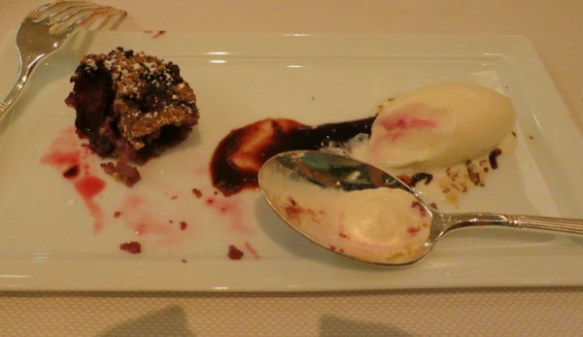
Not only that, but the kids had gotten (included) a dessert of their own, so they couldn’t help us out so much. Still, we were determined to do our duty and eat every bite. On top of the five desserts + cookies + cheese course, there was a tiny truffle course where we could choose our own adventure. How could we say no?
At one point I said, “If they bring another dessert, I’m going to cry,” and we all started laughing, on the verge of breaking the Code of Near-Silence.
Finally we ate our way through the last plate, now having finished enough dessert for about ten people. The last plate was probably my favorite, some kind of cherry cake (pictured above). We rolled out, giggling to ourselves.
My son said the other day, “Let’s never take the circus of desserts next time.” Amen. Maybe just 1/10 of it.
Below is a picture of one of the children’s desserts.

And in case you’re wondering yes, I threw the whole gluten-free eating thing out the window that week. I paid for it the next week, but it was well worth it!



By: Alice,
on 7/13/2014
Blog:
OUPblog
(
Login to Add to MyJacketFlap)
JacketFlap tags:
Ramadan,
soccer,
World Cup,
Oxford Islamic Studies Online,
Fútbol,
*Featured,
OISO,
Online products,
Sports & Games,
Brazil World Cup 2014,
Brazilian Muslims,
FAMBRAS,
Grand Imam of al-Azhar Ahmed al-Tayeb,
Melanie Trexler,
Muslim fans,
Muslim soccer players,
physical deprivation,
spiritual reflection,
gijlmar,
football,
Religion,
Add a tag
By Melanie Trexler
As 16 teams reached the knockout stage of the World Cup, the blasts of canons sounded to signal the beginning of Ramadan, the holy month in the Islamic lunar calendar in which Muslims are to abstain from food, drink, smoking, sex, and gossiping from sunrise to sunset. The World Cup offers Muslims an opportunity to celebrate both their faith and fútbol with the world.
Muslim soccer players and Muslim fans inevitably are impacted. Although only two national teams from countries with a significant Muslim population (Algeria and Nigeria) competed in the knockout stage, Muslim players are also representing European nations. Islamic religious leaders have given Muslim athletes permission to abstain from fasting during Ramadan, but it remains the player’s decision.
However, Ramadan involves more than physical deprivation; it is a time of personal spiritual evaluation and renewal. Ramadan is a month of reflection in which Muslims assess their behavior in light of religious teachings with a goal of cultivating religious piety. Hardships Muslims endure during fasting (such as hunger, thirst, desire, etc.) facilitate this internal examination. In their self-reflection, Muslims consider their responsibility to follow God’s will: do good, avoid wrongdoing, strive for social justice, and seek peaceful relations with others. However, in a world filled with distractions, like the World Cup, cultivating these practices is difficult.
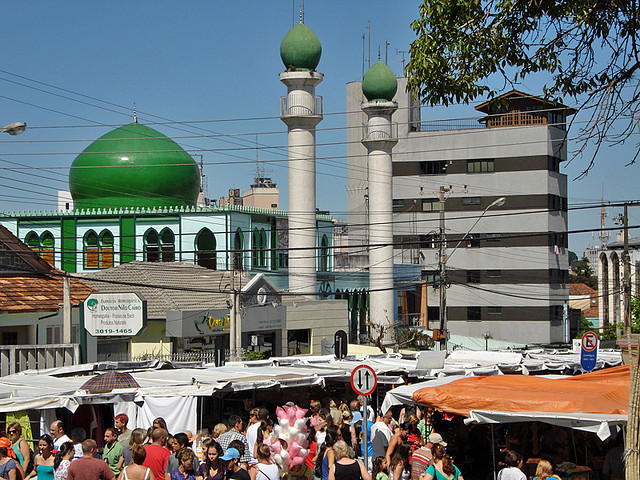
Feira de domingo. Curitiba – Paraná. Photo by Gilmar Mattos 2008. CC BY-NC-SA 2.0 via gijlmar Flickr.
For a small minority of ultra-conservative Muslims, soccer games are considered a “public abomination” that promote cursing, gambling, profiteering, excess partying, and hostility between fans of opposing teams. As a result, Yasser Borhami, a Salafi preacher and leader of the Egyptian al-Daawa Movement claims, “World Cup matches distract Muslims from performing their [religious] duties. They include forbidden things that could break the fast in Ramadan as well as [other forbidden things] in Islam like intolerance and wasting time.”
The vast majority of Muslims, however, reject such a position. Instead, as the Grand Imam of al-Azhar Ahmed al-Tayeb noted in a speech he submitted to World Cup officials at the invitation of Brazilian President Dilma Rousseff, the games are “an opportunity to spread peace and equality among the people, to transmit feelings of love and brotherhood, to get rid of injustice, evil and discrimination among humanity, to help the weak, the poor, the patient and the underprivileged.” The values that al-Tayeb encouraged World Cup enthusiasts to embody lie at the heart of Ramadan observance.
Brazilian Muslims are taking measures to help Muslim sports fans minimize distractions that might arise during the games (such as breaking fasts, missing prayers, and/or engaging in un-Islamic entertainment) that could hinder this self-analysis. The Federation of Muslims Associations in Brazil (FAMBRAS) printed The Guide – Muslim Fan, a 28-page booklet providing Muslim tourists with essential information about Brazil and Islam. This pamphlet includes a history of Islam in Brazil, embassy addresses of Arab and Islamic countries, and brief city profiles of game locations. Local times for the five daily prayers and addresses of mosques in each area are highlighted. In addition to the booklet, FAMBRAS operates a 12-hour telephone hotline and provides a smartphone app to offer information on halal restaurants and entertainment options. Their efforts are twofold: helping Muslims observe Islam and enjoy the World Cup.
Muslims visiting the World Cup are not alone in facing potential soccer distractions. In the Arab world, the evening hours of Ramadan are prime time for the television industry. Networks are altering programming to accommodate World Cup games broadcast in these time slots. Since kick-off times coincide with peak television viewing hours in the Middle East, Africa, and Europe, FIFA officials anticipate higher viewership for the 2014 World Cup than the 3.2 billion people who tuned in to the 2010 games. The establishment of public viewing centers in countries with large Muslim populations, such as in Indonesia, Nigeria, and Algeria, suggest additional Muslim viewers will watch this year.
Although Muslims watching these games may not overtly discuss religious themes, their friendships and engagement with others over an international sporting event provides a foundation for deeper spiritual reflections. Thus, it’s possible for Muslims to celebrate their love of fûtbol and their faith during Ramadan.
Ramadan Kareem.
Melanie Trexler is a Ph.D. candidate in theological and religious studies at Georgetown University. Originally from Richmond, Kentucky, Melanie completed her B.A. at Furman University where she double-majored in political science and religion. She continued her education at Vanderbilt University, receiving a Masters of Divinity in 2007 before entering Georgetown’s Ph.D. program in theological and religious studies with a focus in religious pluralism. She studies Islam and Christianity, concentrating on Muslim-Christian relations in the United States and in the Arab world.
Oxford Islamic Studies Online is an authoritative, dynamic resource that brings together the best current scholarship in the field for students, scholars, government officials, community groups, and librarians to foster a more accurate and informed understanding of the Islamic world. Oxford Islamic Studies Online features reference content and commentary by renowned scholars in areas such as global Islamic history, concepts, people, practices, politics, and culture, and is regularly updated as new content is commissioned and approved under the guidance of the Editor in Chief, John L. Esposito.
Subscribe to the OUPblog via email or RSS.
Subscribe to only religion articles on the OUPblog via email or RSS.
The post Fútbol and faith: the World Cup and Ramadan appeared first on OUPblog.


By: PennyF,
on 7/13/2014
Blog:
OUPblog
(
Login to Add to MyJacketFlap)
JacketFlap tags:
Germany,
Geography,
World,
atlas,
Europe,
World Cup,
Atlas of the World,
FIFA,
Social Sciences,
*Featured,
oxford’s atlas,
Sports & Games,
country facts,
fifa host,
markin,
klaproth,
attesting,
Books,
History,
Add a tag
Today is the conclusion of the 2014 FIFA World Cup, and our highlights about the final four competing nations with information pulled right from the pages of the latest edition of Oxford’s Atlas of the World. The final two teams, Germany and Argentina, go head-to-head on Sunday, 13 July to determine the champion.
Like many of its European neighbors, Germany is a country that loves football, and is one of the most competitive football-playing nations in the world. Attesting to that is their success in the semi-finals in this year’s Cup. Here are eight interesting facts you might not have known about the country that bruised Brazil’s ego.
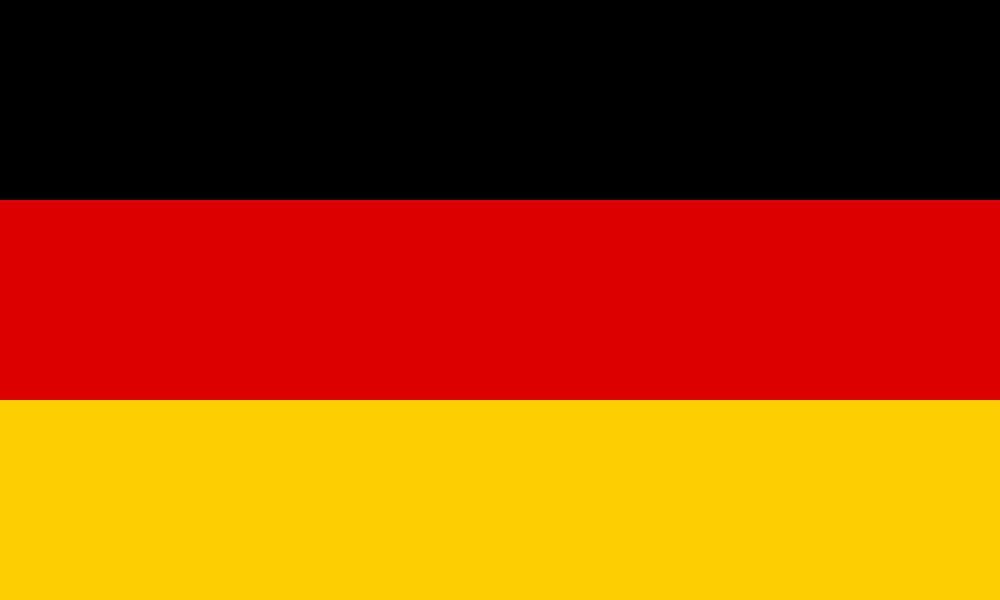
- Like FIFA host country Brazil, Germany also elected its first female leader in recent years when Angela Merkel became Chancellor in 2005.
- In addition to bringing mankind the likes of Albert Einstein and Johan Gutenberg, inventor of the first printing press in Europe, Germany provides 20.6% of the world’s motor vehicles and 17% of our pharmaceuticals.
- Uranium was first discovered by a German chemist, Markin Klaproth, in 1789 and boasts the fourth largest industrial output (from mining, manufacturing, construction, and energy) in the world.
- Germany had a rough go of things for a while after World War II with its division into East and West factions, as well as the Cold War. The two were reunited on 3 October 1990 and adopted West Germany’s official name, the Federal Republic of Germany.
- Deutschland is a leading member of the European Union as well as the 17-member Eurozone, the economic and monetary union of nations that utilize the Euro as their sole form of currency.
- In terms of religion, Germany is mostly a Protestant and Roman Catholic country with a representation of 34% of the population.
- Although a leading producer of nuclear power (Germany ranks sixth in the world for 4.1% of global production), following the 2011 Fukushima disaster, the country has begun phasing out its nuclear power production.
- Germany is a primary refugee destination, ranking first in Europe and fourth in the world after Pakistan, Iran, and Syria.
Oxford’s Atlas of the World — the only world atlas updated annually, guaranteeing that users will find the most current geographic information — is the most authoritative resource on the market. The milestone Twentieth Edition is full of crisp, clear cartography of urban areas and virtually uninhabited landscapes around the globe, maps of cities and regions at carefully selected scales that give a striking view of the Earth’s surface, and the most up-to-date census information. The acclaimed resource is not only the best-selling volume of its size and price, but also the benchmark by which all other atlases are measured.
Subscribe to the OUPblog via email or RSS.
Subscribe to only geography articles on the OUPblog via email or RSS.
Image credit: Flag of Germany. Public domain via Wikimedia Commons.
The post Countries of the World Cup: Germany appeared first on OUPblog.


By: PennyF,
on 7/12/2014
Blog:
OUPblog
(
Login to Add to MyJacketFlap)
JacketFlap tags:
Geography,
World,
Netherlands,
dutch,
atlas,
Europe,
World Cup,
Oxford Atlas of the World,
Atlas of the World,
FIFA,
Social Sciences,
*Featured,
friesland,
oxford’s atlas,
Sports & Games,
country facts,
meuse,
catarinella,
Books,
History,
Add a tag
As we gear up for the third place finalist match of the 2014 FIFA World Cup today — the Netherlands face the host country Brazil — we’re highlighting some interesting facts about one of the competing nations with information pulled right from the pages of the latest edition of Oxford’s Atlas of the World. Germany (tomorrow’s country highlight) and Argentina go head-to-head on Sunday, 13 July to determine the champion.
The Netherlands, located in the western end of Northern Europe is widely known for its rich Dutch culture. The population is 83% Dutch, with a smaller percentage made up of Indonesian, Turkish, and Moroccan ethnicities. The nation has two official languages: Frisian, spoken mainly by inhabitants of the northern province of Friesland, and Dutch.
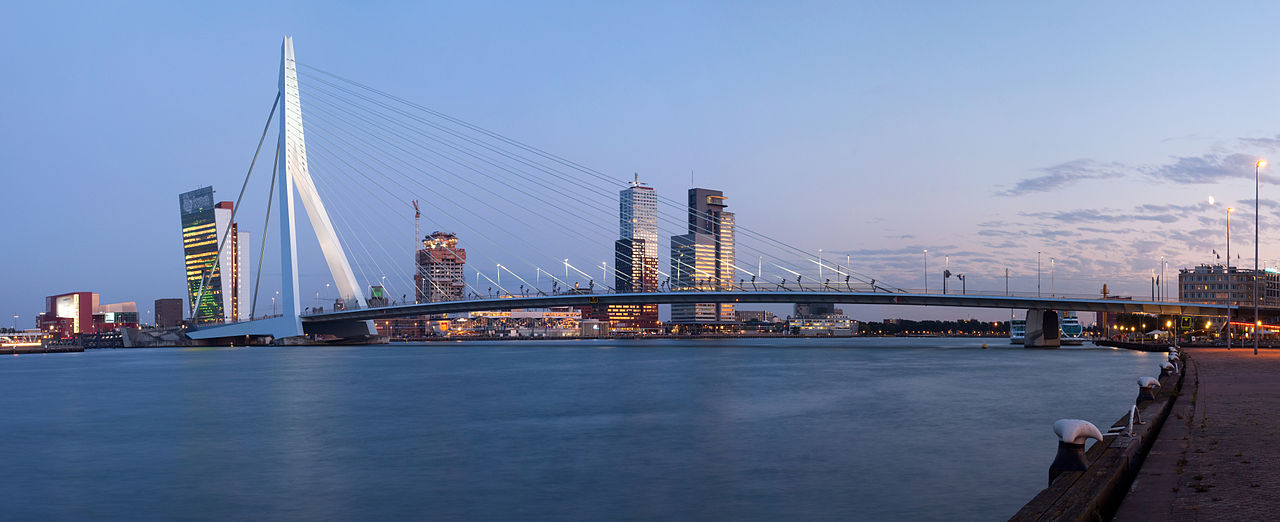
The country has a vast history, dating back earlier than the 16th century when it saw a multitude of foreign rulers including the Romans, the Germanic Franks, the French, and the Spanish. After building up a great overseas empire, the Dutch lost control of the seas to England in the 18th century, and were under French control until 1815. After remaining neutral through World War I, and being occupied by Germany in World War II, they went on after the wars to become active in West European affairs.
In 1957, the Netherlands became a founding member of the European Economic Community, now known as the European Union, and continues to be a leader in industry and commerce. Exports currently account for over 50% of the country’s GDP and include natural gas, machinery and electronic equipment, and chemicals. A highly industrialized country, it is also a major trading nation as it imports many of the materials their industries require.
With a constitutional monarchy, the Netherlands saw its Queen Beatrix abdicate the thrown in 2013 in favor of her son Prince Willem Alexander. She had served a 33-year reign.
Oxford’s Atlas of the World — the only world atlas updated annually, guaranteeing that users will find the most current geographic information — is the most authoritative resource on the market. The milestone Twentieth Edition is full of crisp, clear cartography of urban areas and virtually uninhabited landscapes around the globe, maps of cities and regions at carefully selected scales that give a striking view of the Earth’s surface, and the most up-to-date census information. The acclaimed resource is not only the best-selling volume of its size and price, but also the benchmark by which all other atlases are measured.
Subscribe to the OUPblog via email or RSS.
Subscribe to only geography articles on the OUPblog via email or RSS.
Image credit: A panorama of the Erasmus Bridge and the River Meuse in the Dutch city of Rotterdam. Photo by Massimo Catarinella. CC BY 3.0 via Wikimedia Commons.
The post Countries of the World Cup: Netherlands appeared first on OUPblog.


By: PennyF,
on 7/11/2014
Blog:
OUPblog
(
Login to Add to MyJacketFlap)
JacketFlap tags:
Books,
History,
Geography,
World,
atlas,
argentina,
Latin America,
World Cup,
Oxford Atlas of the World,
Atlas of the World,
FIFA,
Social Sciences,
*Featured,
Sports & Games,
word facts,
roman catholicism accounts,
argentina pulled,
fernández,
kirchner,
argentina’s,
Add a tag
As we gear up for the conclusion of the 2014 FIFA World Cup, we’re highlighting some interesting facts about the final four competing nations with information pulled right from the pages of the latest edition of Oxford’s Atlas of the World. Argentina and the Netherlands battled it out in a semi-final match on Wednesday 9 July; Argentina pulled through after a penalty shootout. The team will go head-to-head with Germany on Sunday, 13 July to determine the champion.
Argentina, a two-time World cup winner reached its fifth final when it defeated the Netherlands. The last time it had advanced that far was 24 years ago in 1986. To celebrate their achievement, here are a few facts to think about until then next Cup.
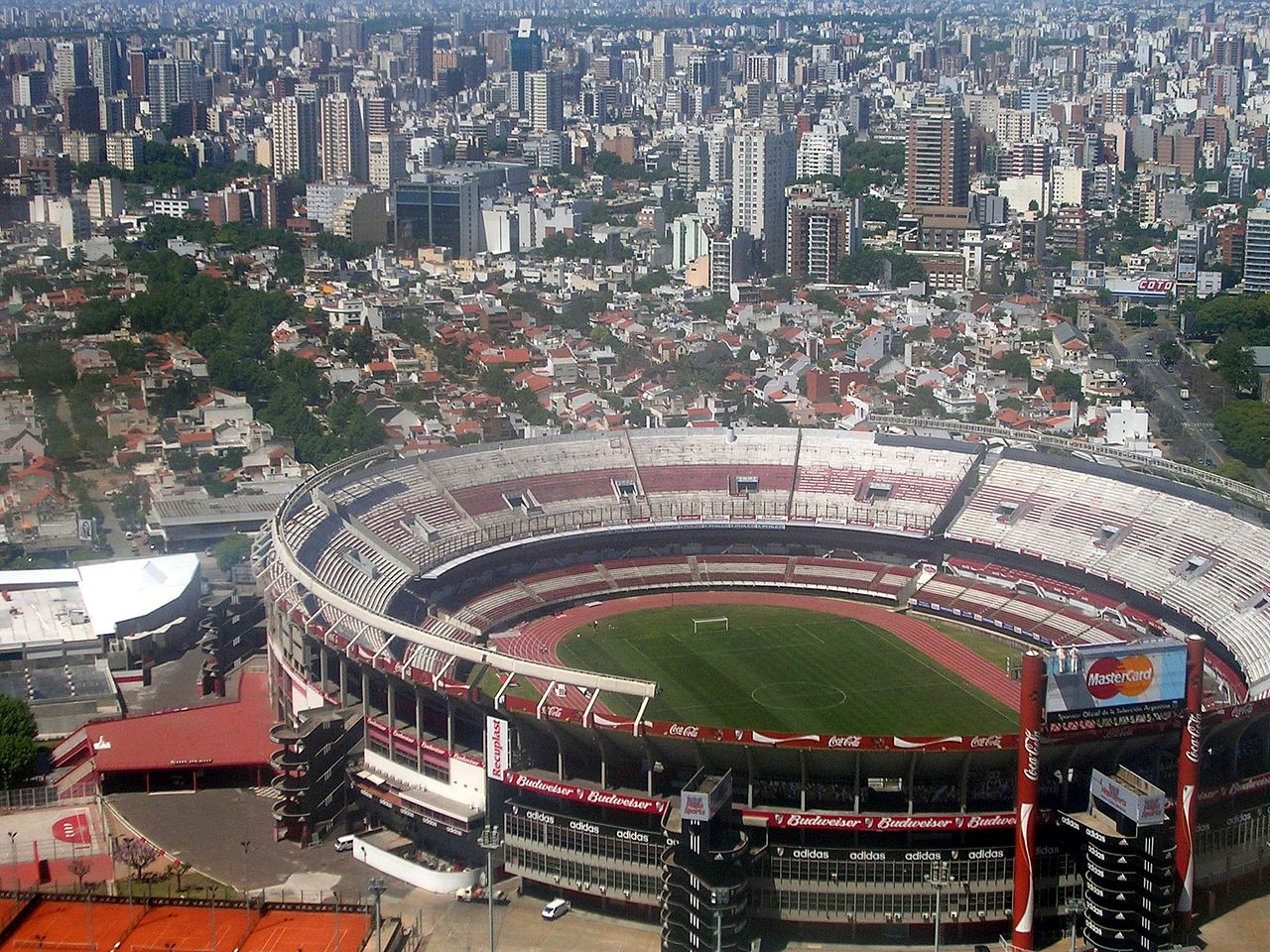
- In 2007 Cristina Fernández De Kirchner was the first directly elected woman president in Argentina. She succeeded her late husband, Néstor Carlos Kirchner, who had previously served for four years. She was later reelected in 2011.
- The country had a large indigenous population prior to European colonization; however 86% of Argentina’s population is now of European ancestry.
- Argentina is South America’s second largest nation after Brazil, and the world’s eighth largest country. It is the fourth largest Spanish-speaking nation in the world.
- Spain took control of Argentina in the 16th century and continued its reign until 1816, when the country won back its independence. Argentina later suffered from instability and periods of military rule.
- The World Bank classifies Argentina as an “upper-middle-income” developing country. Its form of currency is the Argentine Peso which is equivalent to 100 centavos.
- In 1991, Argentina, Brazil, Paraguay, and Uruguay set up an alliance, Mercosur, aimed at creating a common market. The agreement’s main purpose is to facilitate free trade.
- Roman Catholicism accounts for a whopping 92% of the country’s population (Pope Francis was born and raised there). Protestantism and Judaism tie at a distant second making up 2% each of the population.
Oxford’s Atlas of the World – the only world atlas updated annually, guaranteeing that users will find the most current geographic information — is the most authoritative resource on the market. The milestone Twentieth Edition is full of crisp, clear cartography of urban areas and virtually uninhabited landscapes around the globe, maps of cities and regions at carefully selected scales that give a striking view of the Earth’s surface, and the most up-to-date census information. The acclaimed resource is not only the best-selling volume of its size and price, but also the benchmark by which all other atlases are measured.
Subscribe to the OUPblog via email or RSS.
Subscribe to only geography articles on the OUPblog via email or RSS.
Image credit: Buenos Aires desde el cielo (Estadio de River). By Elemaki. CC BY 3.0 via Wikimedia Commons.
The post Countries of the World Cup: Argentina appeared first on OUPblog.


By: PennyF,
on 7/10/2014
Blog:
OUPblog
(
Login to Add to MyJacketFlap)
JacketFlap tags:
Books,
History,
Geography,
World,
soccer,
Brazil,
atlas,
Latin America,
World Cup,
Atlas of the World,
FIFA,
Fútbol,
*Featured,
Brasil,
Add a tag
As we gear up for the conclusion of the 2014 FIFA World Cup, we’re highlighting some interesting facts about the final four competing nations with information pulled right from the pages of the latest edition of Oxford’s Atlas of the World. If you’re one of the few who hasn’t caught onto World Cup fever, the winner of the World Cup is near! Brazil and Germany faced off on Tuesday, 8 July. The shocking game left Germany the victor, with Argentina and the Netherlands battling it out on Wednesday 9 July. Argentina pulled through after a penalty shootout. The third place finalist will be determined on Saturday, 12 July with the final two teams going head-to-head on Sunday, 13 July to determine the champion.
The Federative Republic of Brazil, also known by the spelling Brasil, the world’s fifth largest country with a population of over 199 million, has the honor and distinction of hosting the World Cup this year, a fact that had this fútbol-centric nation even more hyped than usual.
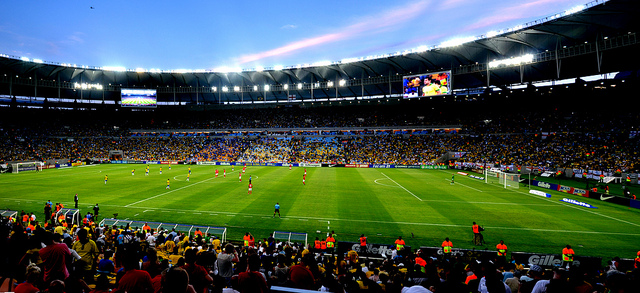
A large country of over 3 million square miles, the area contains three main regions. Manaus, one of the host cities, has high temperatures all throughout the year. A tropical climate, rainfall is normally heavy, but lucky for players and cheering fans, the weather tends to be a bit drier from June through September.
Brazil is a leading economy in South America, described as a “rapidly industrializing economy.” You might not know that is the world’s top producers of products including cars, paper, aircrafts, and even materials ranging from diamonds to tin. With coffee as it’s leading export, agriculture employs 16% of the population. A major farming nation, products also include bananas, coca, rice, sugarcane, and maize.
With the Amazon, the world’s second largest river, in its backyard, forestry is a major industry although the fear that destroying the rainforests can accelerate global warming is a real concern. On a positive environmental note, Brazil is the second highest producer of hydroelectricity in the world, accounting for 12.3% of total world production.
Politically, the nation sets an example for progress in gender equality, having elected its first female president, Dilma Rousseff of the Workers Party, in 2010. It’s government is a Federal Republic, having first declared itself an independent empire in 1822 after originally being claimed by Portugal in 1500. After periods of material rule from the 1930s, civilian rule was restored in 1985 with a new constitution adopted in 1988.
Oxford’s Atlas of the World – the only world atlas updated annually, guaranteeing that users will find the most current geographic information — is the most authoritative resource on the market. The milestone Twentieth Edition is full of crisp, clear cartography of urban areas and virtually uninhabited landscapes around the globe, maps of cities and regions at carefully selected scales that give a striking view of the Earth’s surface, and the most up-to-date census information. The acclaimed resource is not only the best-selling volume of its size and price, but also the benchmark by which all other atlases are measured.
Subscribe to the OUPblog via email or RSS.
Subscribe to only geography articles on the OUPblog via email or RSS.
Image credit: Photo by Digo_Souza>, CC BY 2.0 via Flickr
The post Countries of the World Cup: Brazil appeared first on OUPblog.


By: Alice,
on 7/9/2014
Blog:
OUPblog
(
Login to Add to MyJacketFlap)
JacketFlap tags:
Qatar,
public international law,
migrant workers,
Sports & Games,
Journal of Refugee Studies,
indentured servitude,
kafala system,
Susan Kneebone,
wbur,
kafala,
ituc,
Law,
Journals,
Politics,
Current Affairs,
slavery,
World Cup,
pil,
Editor's Picks,
*Featured,
Business & Economics,
oxford journals,
migrant,
Add a tag
By Susan Kneebone
As recent demonstrations in Brazil around the staging of the FIFA 2014 World Soccer Cup show, major sporting events put the spotlight on human rights issues in host countries. In the case of Qatar the preparations to host the FIFA 2022 World Cup are focussing worldwide attention on the plight of migrant workers. It estimated that the country needs an extra 500,000 migrant workers to build stadiums and other infrastructure such as a metro system in the lead up to the World Cup. But a report by the International Trade Union Commission (ITUC) predicts that 4,000 migrant construction workers will die in Qatar before the start of the game.
As for much of the Gulf States region, Qatar is heavily dependent on migrant workers. It has the highest ratio of migrants to citizens in the world, with migrant workers making up approximately 88 per cent of the whole population. The majority of migrant workers come from South and South-East Asian countries: Bangladesh, India, Indonesia, Nepal, Pakistan, Sri Lanka, and the Philippines. A series of reports has revealed poor working conditions for migrant workers in Qatar particularly in the construction industry and in domestic workplaces and a lack of enforcement of existing protective legal mechanisms.
This situation highlights the global issue of exploitation of low and unskilled temporary migrant workers, also labelled as “foreign workers”. Currently, there are about 232 million migrants globally, of whom it is estimated that 105 million are migrant workers who are displaced by necessity in a labour market which reflects the increasing disparity between rich and poor countries. Unskilled temporary migrant workers are vulnerable because they have no choice but to migrate to work. Such workers are constructed in laws and policies as lacking connection to the host state but rather the responsibility of their home state. They are discriminated in the host state on the basis of their culture and identity, and often regarded as ‘export’ labour at home.
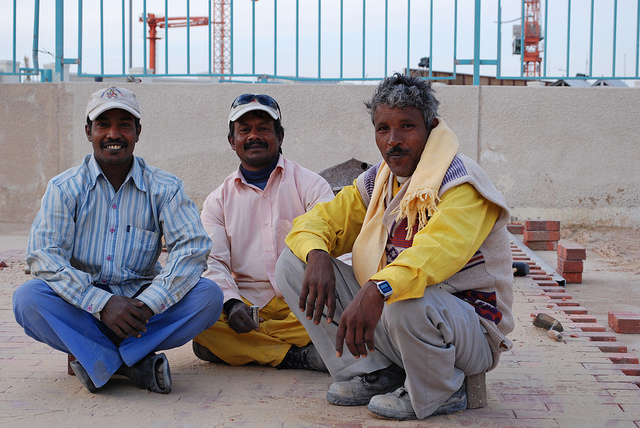
Builders at Work: There are close to one million migrant workers in Qatar, mainly from South Asia. The majority work in construction. Photo by WBUR Boston’s NPR News Station. CC BY-NC-ND 2.0 via WBUR Flickr.
The Kafala sponsorship system which operates in Qatar is a symptom of such vulnerability. The Kafala system reduces migrant workers to the status of slaves or indentured property in host country. This system is used to regulate the relationship between employers and migrants, with a work permit linked to a single person, who is often the sponsor. The law provides power and authority to sponsors to prevent migrant workers from changing employers and from the leaving Qatar.
As the Special Rapporteur on the human rights of migrants, François Crépeau summaries:
The kafala system enables unscrupulous employers to exploit employees. Frequent cases of abuse against migrants include the confiscation of passports, refusal to give “no objection” certificates (allowing migrants to change employer) or exit permits and refusal to pay migrants’ plane tickets to return home. Some employers do not extend residence permits for their employees, often because of the fees incurred. This leads to migrants ending up in an irregular situation, with no valid identity card, despite the fact that they are regularly employed. [7]
The recruitment process and charging of excessive fees are other critical issues. Recruitment fees are forbidden by Qatari law, but the reports found that many migrant workers had taken out substantial loans to pay the fees in their home countries and were in long-term debt. Contract substitution is also a huge problem, as the terms of contracts signed in the home countries are often different upon arrival in Qatar, usually with a lower salary and different job description. As migrant workers cannot easily change jobs without the sponsor’s approval and often have recruitment loans to repay, they become highly vulnerable to abuse and less likely to report such violations. In many cases, such practices will amount to human trafficking for labour exploitation or forced labour as the Amnesty International Report, “My Sleep is My Break” explains (pp54-60).
The exploitation of “foreign” migrant workers suggests that we have created a new global form of ‘indentured servitude’ or slavery in which others exercise property-like powers or control over individuals. The irony is that the development of individual rights to free and decent working conditions in the nineteenth century ran parallel to the anti-slavery movement. Qatar 2022 offers an opportunity to Qatar to show the global community the need to recognise collective responsibility for migrant workers in a globalised economy, and to put pressure on states and non-state actors to respect the rights of migrant workers.
Dr Susan Kneebone (PhD, MA (Asian Studies), Dip Ed, LLB), is a Professor in the Faculty of Law, Monash University, Australia. She is the author of many articles and book chapters, including author \ editor of the following: Transnational Crime and Human Rights: Responses to Human Trafficking in the Greater Mekong Subregion (Routledge 2012) (co-authored with Julie Debeljak) ; Migrant Workers Between States: In Search of Exit and Integration Strategies in South East Asia 40 (4) Asian Journal of Social Sciences (2012) ; “Transnational Labour Migrants: Whose Responsibility?” in Fiona Jenkins, Mark Nolan and Kim Rubenstein eds, Allegiance and Identity in a Globalised World (Cambridge University Press, 2014 – in press) Chapter 18. Recent publications include: “ASEAN and the Conceptualisation of Refugee protection” in Abass A. and Ippolito, F., et al eds., Regional Approaches to the Protection of Asylum Seekers: An International Legal Perspective (Ashgate 2014) Chapter 13, pp295-324 ; “The Bali Process and Global Refugee Policy in the Asia-Pacific Region” Special Edition of the Journal of Refugee Studies on Global Refugee Policy, 2014.
Interested in learning more about the issues facing migrant workers? Oxford Journals has created a special World Refugee Day virtual issue with a selection of free articles.
Oxford University Press is a leading publisher in international law, including the Max Planck Encyclopedia of Public International Law, latest titles from thought leaders in the field, and a wide range of law journals and online products. We publish original works across key areas of study, from humanitarian to international economic to environmental law, developing outstanding resources to support students, scholars, and practitioners worldwide. For the latest news, commentary, and insights follow the International Law team on Twitter @OUPIntLaw.
Subscribe to the OUPblog via email or RSS.
Subscribe to only law articles on the OUPblog via email or RSS.
The post World Cup puts spotlight on rights of migrant workers in Qatar appeared first on OUPblog.


By: Julia Callaway,
on 7/5/2014
Blog:
OUPblog
(
Login to Add to MyJacketFlap)
JacketFlap tags:
football,
Language,
soccer,
World Cup,
British English,
American English,
*Featured,
oxford dictionaries,
oxfordwords blog,
Dictionaries & Lexicography,
Sports & Games,
World Cup 2014 Brazil,
offside rule,
soccer vs football,
football v football,
kit vs uniform,
Add a tag
By Fiona McPherson
The United States and Great Britain are two countries separated by a common language – a phrase commonly attributed to Shaw sometime in the 1940s, although apparently not to be found in any of his published works. Perhaps another way of looking at it is to say that they are two countries separated by a different ball – a sentiment that is particularly apt when football’s World Cup comes around.
Of course, it isn’t quite as simple as that. For years we’ve heard how football is becoming ever more popular in the USA. Major League Soccer’s profile continues to build, and indeed, the US even hosted the World Cup in 1994, and has twice won the FIFA Women’s World Cup. But despite this, football pales into insignificance compared with other big US sports. The National (American) Football League brought in 9 billion dollars in revenue in 2013, whereas Major League Soccer earned only about half a billion; even the National Hockey League earned over 3 billion. If you’re one of those Americans who hasn’t yet become a diehard fan, here’s a potted (and tongue) guide to bluffing your way into sounding knowledgeable about the beautiful game.
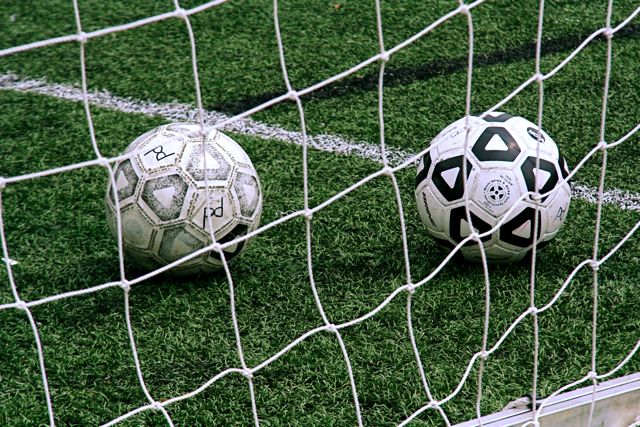
The first rule of football is…
…don’t call it soccer, certainly not within earshot of someone who thinks of it as ‘proper’ football. This is probably the most crucial element in giving the impression that you’ve been into this game for decades. Naturally this can be difficult if you are trying to differentiate between two different sports (in the UK it is easy – American football v football). Soccer, the word, comes from an abbreviation for Association (from Association Football, the ‘official’ name for the game) plus the addition of the suffix -er. This suffix (originally Rugby School slang, and then adopted by Oxford University), was appended to ‘shortened’ nouns, in order to form jocular words. Rugger is probably the most common example, but other examples included in the Oxford English Dictionary are brekker (for breakfast), bonner (for bonfire), and cupper (a series of intercollegiate matches played in competition for a cup).
Apart from its origins being decidedly British, you will find plenty of examples of soccer being used by British people over the decades. But in terms of the history of the language, it’s something of a 19th-century johnny-come-lately: by contrast, football has been used since the 1400s. In modern usage, in order to blend in with the diehard fans, it’s preferable to stick to football – and, when speaking to these fans, never, ever call it Association Football.
A quick reference to sound like a football native:
Match vs game
Match is used in relation to football, but game (used in American Football) is actually the older sense. Game, meaning a competitive activity governed by rules of play, is found in Old English – while match in a similar sense dates to the 16th century. (The word match is also found in Old English, with reference to spouses or people of equal standing.)
Pitch vs field
Pitch, meaning ‘the area of play in a field game’ and used in football, is quite a recent addition to English — currently first found in the late 19th century — and field (with a similar definition, used for American football) predates it by over 150 years. Yet fashions change, and you should refer to a football pitch if you want to be accepted by aficionados in Britain.
Boots vs cleats / shoes
The distinction between boots (used in football) and shoes (in American football) isn’t particularly noteworthy, but the use of cleats is more intriguing. It’s actually an example of synecdoche: the part is used to represent the whole. This becomes clear if you realize that cleats are the projections on the sole of a shoe, designed to prevent the wearer losing their footing (which are commonly called studs in British English).
Extra time vs overtime
As the name suggests, extra time is a further period of play in football, added on to a game if the scores are equal and the match must be decided (not to be confused with injury time, added to compensate for time lost dealing with injuries). Overtime describes the same event in North American games, drawing on the older sense of ‘time worked in addition to one’s normal working hours’. The first use of both terms is currently dated to the early 20th century, with extra time coming first.
To mark vs to guard vs to cover
Guarding in basketball, and marking in a variety of British games including football, means keeping close to an opponent in order to prevent them from getting or passing the ball. To add to the international confusion, in Australian Rules Football, marking a ball means catching it from a kick of at least ten metres and is to be celebrated – whereas, unless you’re the goalkeeper (or in the crowd), catching the ball at all in football is a handball and a foul. In American football, a defensive player will cover an offensive player.
Kit vs uniform
A uniform (worn for American sports) may sound more militaristic than a kit (worn in football), but the latter actually has fairly regimental (albeit more informal) origins – the sense comes from kit as the equipment of a solider (also known as articles of kit). This sense, in turn, relates to an earlier sense of kit as a container for carrying commodities – from the Dutch kitte, a wooden vessel made of hooped staves.
There’s no other way
In American Football, there are numerous ways to score. In football, there is only one. If the ball ends up in the back of the net (provided there has been no infringement of the rules), it’s a goal. Whether scored by a header, from the penalty spot, a volley, route one, scissor kick, after a glorious mazy run from one end of the pitch to the other, or even if it hits a defending player on the bottom/knee/shoulder and deflects past the goalkeeper into the goal, it’s just a goal, and only counts for one point.
0-0 can be exciting
It’s probably a bit of an urban myth that Americans bemoan the fact that it’s perfectly possible to sit through 90 minutes of football, and for the end result to be 0-0. Meaning that no one scored. While any self-respecting football fan will have witnessed the dourest of dour games which end up as a goalless draw, there are action-packed games which inexplicably end up goalless due to one or more goalies playing a blinder. You’ll just have to believe us on this. While you can’t immediately tell from the numbers written as symbols, that ‘0-0’ is nil-nil rather than zero-zero. A good way to expose your ignorance amongst football fans is to refer to a result being two-zero, as the 0 is always termed nil in football. Nil is a contraction of the Latin nihil, meaning ‘nothing’, and also to be found in the word nihilism (the belief that nothing in the world has a real existence).
And last, but not least, don’t worry too much about explaining the offside rule. Plenty of people can’t.
A version of this post first appeared on the OxfordWords blog.
Fiona McPherson is a Senior Editor with the Oxford English Dictionary.
Subscribe to the OUPblog via email or RSS.
Subscribe to only language articles on the OUPblog via email or RSS.
Image: Soccer Balls Net 7-22-09 1 by Steven Depolo. CC BY 2.0 via Flickr.
The post The first rule of football is… don’t call it soccer appeared first on OUPblog.

By:
Luisa LaFleur,
on 7/1/2014
Blog:
The Children's Book Review
(
Login to Add to MyJacketFlap)
JacketFlap tags:
Football,
Sports,
Author Interviews,
Soccer,
featured,
Author Showcase,
World Cup,
Cultural Wisdom,
eBooks & Apps,
Geeta Raj,
Add a tag
Geeta Raj brings an 11-year career in international development and humanitarian assistance to The Global Sleepover series, including over 8 years as a Senior Program Analyst with the United States Agency for International Development (USAID).

Who will win the 2014 World Cup?I am completely obsessed with the 2014 World Cup tournament in Brazil. There are so many amazing teams playing that I don’t want to miss a single game! While you might not actually see both of these competitors in Brazil, what do you think of today’s match-up? Team Kitten vs. Arjen Robben from Team Holland!

Are you loving the
World Cup this year, or do you love kittens more? Which team do you support, and who will be the 2014 champions? Leave your World Cup predictions in the Comments!
 Sonja, STACKS Staffer
Sonja, STACKS Staffer
By: Mark Myers,
on 6/24/2014
Blog:
(
Login to Add to MyJacketFlap)
JacketFlap tags:
Sports,
humor,
funny,
Southern,
soccer,
American,
USA,
world cup,
United States,
It Made Me Laugh,
flopping,
Add a tag
Portsong will never host a World Cup. Our only stadium is open air, mowed by livestock, and has no bleachers. It would take too long to mark Hargit’s Field and we simply aren’t prepared for the crush of humanity that such a tournament would bring. I’m not one of those Americans who hates soccer. I really have no problem with it and would be okay if it took hold. With all of the kids playing and international flavor in the U.S., it really is amazing that professional soccer can’t seem to get off the ground.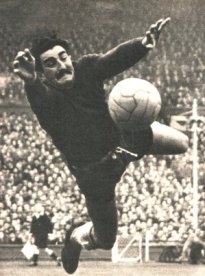
So what’s the problem? Why does the average football or baseball fan have such a disregard for the sport? Some say it is too slow. Okay, I get that – we like things fast and instant. But nothing is slower than baseball. When you have the league itself changing rules to speed up the game, you know you are in the paint-drying business.
Last week, I watched a little bit of Ghana vs. Germany and think I stumbled on a few things.
First, what is the deal with the goaltender wearing a different uniform? What makes that guy special – either you are on the team or you’re not! If they do that so the ref can tell who gets to touch the ball with their hands, they need new refs. Can these guys not identify one guy quickly enough to call a handball? They usually wear Mickey Mouse gloves anyway, which kinda stand out. No, the refs aren’t the problem. There is clearly some socialistic motive behind the goalie’s garb.
Second, the flopping. It has become a big topic of conversation around here. I have never seen grown, athletic men act like such drama queens in all my days. It is crazy how when their shin gets touched, their arms fly up wildly before they flop, drop, and roll. Have you further noticed that each victim assumes the same paralyzed position holding their knee until they realize the call didn’t go their way? Then instantly, they pop back up and resume play at full speed as if a good, old-fashion faith healer has smacked them on the forehead and made them well. Hockey and Basketball have instituted rules to punish such behavior. Since they have yellow and red, maybe soccer could give a pink card for flopping.
Lastly, it’s the low scoring and the fact that a game can end in a tie. Nobody likes that. Ties are like whacking off the last five minutes of a movie and saying The End. Somebody has to win!
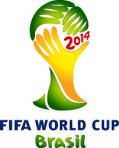 I’ve come to the rescue with a simple idea that kills all three objections. Here is what soccer should do. If a player flops, he has to stay face-down on the ground motionless like a kid playing freeze tag until the guy with the big gloves comes over and tags him. Think about that! Empty nets while the goalies run all over the field bringing players back to life means higher scores. Motionless players make for built-in impediments – therefore, more contact – which leads to additional flopping and more speed bumps. Soccer has just become a high-scoring, contact sport, with frozen men lying face down all over the field! Genius.
I’ve come to the rescue with a simple idea that kills all three objections. Here is what soccer should do. If a player flops, he has to stay face-down on the ground motionless like a kid playing freeze tag until the guy with the big gloves comes over and tags him. Think about that! Empty nets while the goalies run all over the field bringing players back to life means higher scores. Motionless players make for built-in impediments – therefore, more contact – which leads to additional flopping and more speed bumps. Soccer has just become a high-scoring, contact sport, with frozen men lying face down all over the field! Genius.
And if anyone shows up in a different uniform, they have to lay down in the center of the field and balance the ball on their lips as a tee for kick-off. That’ll teach him teamwork.
If I can get to someone with this idea, we’ll have a thirty team mega-league in the United States by 2016.
Photo credit: Leon Rugilo
Filed under:
It Made Me Laugh 

I am not a great football fan but I must admit that this World Cup business looks very different when you are in Latin America.
I visited an ethnic Kuna community in the San Blas islands just as the football got under way and children were out in force, many of them barefoot but wearing Brazilian shirts as they played makeshift games on the island´s airstrip (there is only one flight a day so the rest of the time, it becomes a play area!)
In Panama city, cars are decked out with Colombian or Venezuelan flags. Flat screen tvs have appeared in shopping malls and coffee shops, attracting audiences cheering for Uruguay or Mexico or Argentina or Chile. There is widespread desire for the Cup to stay in Latin America.
As I am trying to track down and read children´s literature from Central and South America at the moment, I was delighted to come across this month a very powerful book by Chilean writer, Antonio Skármeta, The Composition (illustrated by Alfonso Ruano) which not only has a football crazy protagonist but also addresses what life is like for children living during a dictatorship. And, heaven knows, so many Central and South American countries have suffered under dictatorships.

Skármeta spent many years during the Pinochet dictatorship in Germany - you may know him as the screenwriter of the film Il Postino which tells the story of the friendship between Chilean poet Pablo Neruda and his postman. You may be as surprised to learn as I was that the book is set entirely on an island in Chile, not in Italy. The film was great - the books sounds even better.
The Composition opens with Pedro´s disappointment that his parents have given him a plastic soccer ball for his birthday instead of a white leather ball with black patches, like the ones real soccer players use.
The streets are full of soldiers with machine guns. Pedro´s parents are fearful and distressed. They huddle around the radio, listening to foreign radio stations, turned on at a very low volume. One day when he is playing soccer on the street, he sees soldiers arrest the father of one of his friends. When he asks his parents if he is for or against the government, his mother tells him that children are not for or against anything.
At school, an army officer announces a cash prize for the best composition on the children "What My Family Do At Night". What will Pedro do?
The writing is subtle and humorous and effectively shows how children are capable of understanding situations and making moral decisions.
It is only at the last page when Pedro´s father says "We´d better get a chess set then", that we learn that Pedro wrote in his composition that he plays soccer and does his homework and his parents sit on the sofa and play chess all evening.
From July, I will be a little less "scattered" - after almost two years in Panama, I am moving back home to Spain (with I hope frequent visits to England and Ireland). Now if I could only get a decent first draft of my book finished before I leave...
www.maevefriel.com
www.maevefriel.com/blog
I´m on Facebook too.
Brazil 2014 starts today, and I admit, I'm happier than a kid on Christmas morning or my middle schooler on the last day of school. In my house, we breathe, eat, drink, and dream futbol (I detest the word soccer, sorry). This is the one time my two passions merge. Books and sports are beautiful. Sports inspire my writing, and writing has always been the medium through which I express myself, like a sport. It's no wonder my first "real" novel had a futbol soccer star love interest, and this one I'm working on is about an Irish dancer. Some say dance is an art, others that dancers are God's athletes. I tell you, my Irish dancers practice up to eight hours a day during the summer. They're athletes in every sense of the word.
If you're new to the World Cup but want to know more about it, this short clip explains how it works.
And here's a link that will tell you all the schedules, TV listing, etc.
Now back to books. Alex Morgan, the US Women's National Team super star and my daughters' heroine, has a series out. It's cute and fun and it's about girls being strong and wonderful!
There's also Hope Solo's bio for young readers.
There's even a Magic Tree House: Soccer on Sunday.
Do you know of any books I can add to this small list? Name them in the comments! I hope you have a wonderful World Cup month, whatever you do!

By: John Mark Boling,
on 6/10/2014
Blog:
The Winged Elephant
(
Login to Add to MyJacketFlap)
JacketFlap tags:
Brilliant Orange,
Dutch soccer,
world cup,
world cup 2014,
english soccer,
eric simons. secret lives of sports obsession. sports obsession,
those feet. david winner,
world cup books,
world cup reading,
Add a tag
<!--[if gte mso 9]>
<![endif]-->
<!--[if gte mso 9]>
Normal
0
false
false
false
EN-US
X-NONE
X-NONE
<![endif]--><!--[if gte mso 9]>

By: DanP,
on 6/2/2014
Blog:
OUPblog
(
Login to Add to MyJacketFlap)
JacketFlap tags:
football,
History,
pelé,
soccer,
Brazil,
argentina,
Latin America,
World Cup,
odnb,
FIFA,
fifa world cup,
*Featured,
oxford dictionary of national biography,
paulo,
futebol,
Online products,
Sports & Games,
alexander hutton,
charles miller,
latin american history,
matthew brown,
online update,
museu,
santos,
Add a tag
By Matthew Brown
Charles Miller claimed to have brought the first footballs to Brazil, stepping off the boat in the port of Santos with a serious expression, his boots, balls and a copy of the FA regulations, ready to change the course of Brazilian history. There are no documents to record the event, only Miller’s own account of a conversation, in which historians have picked numerous holes. There are no images either, which is why to mark the impending Miller-mania surrounding English participation in the World Cup in Brazil, I recreated the scene on the docks at Santos, today South America’s biggest and busiest port. (Thanks to my colleague Gloria Lanci for capturing the solemnity of the occasion).
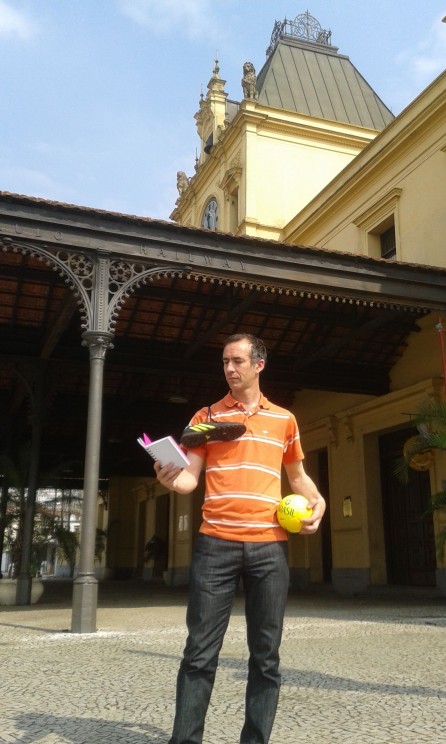
Opposite the passenger terminal, where the photo was taken, an old building is being converted into the Museu do Pelé, to house the history of Santos Futebol Clube’s most famous player, heralded by many as the greatest footballer of the twentieth century – though it will not be ready to open in time for the World Cup. The stories of Miller and Pelé are often linked to illustrate the development of football in Brazil. Gilberto Freyre, the Brazilian sociologist and historian, was one of the first:
‘[It was] Englishmen who introduced into Brazil the principal sporting and recreational replacements for our colonial jousting tournaments: horse-racing, tennis, cycling and football itself, which here became fully naturalised as a game not for fair-haired European expatriates in the tropics but for local people: […] people increasingly of varying shades of brown; with de-Anglicisation culminating in the admirable Pelé, after shining with Leônidas.
[Football] has become a veritable Afro-Brazilian dance, with footwork never imagined by its inventors. Has it stopped being British? Not in the slightest. Association football cannot be separated from its British origins to be considered a Brazilian or Afro-Brazilian invention. What it is, in its current, triumphant expression, is an Anglo-Afro-Brazilian game’. (Gilberto Freyre, The British in Brazil, London, 2011, first published in Portuguese in 1954, p.13.)
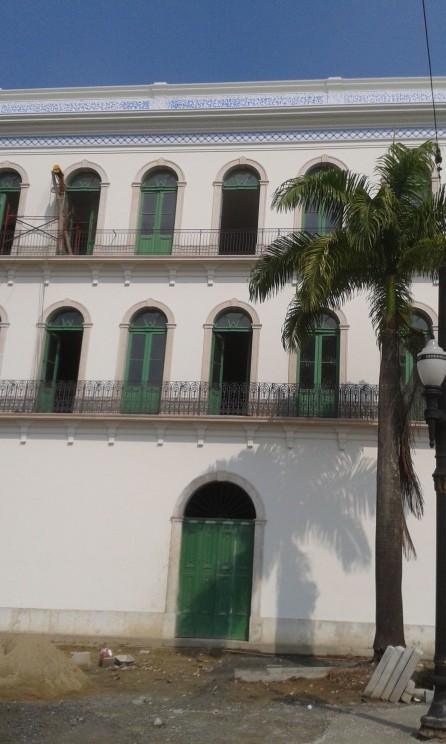
Charles Miller was born in São Paulo to a Scottish father and a Brazilian mother whose surname, Fox, reveals her English origins. During his lifetime the population of São Paulo ballooned from around 100,000 in 1874 to well over 2 million in 1953. Most of those new citizens were migrants and their children. São Paulo and Brazil were remaking themselves. Football and music became central ways for Brazilians to express a new inclusive identity after the abolition of slavery (1888) and the establishment of a new republic to replace monarchy (1889).
The sense of Brazilian football leaving its British origins behind as it headed for global domination on and off the pitch, as suggested by Freyre, is why there is no statue or plaque to Miller in the city, not even in the Praça Charles Miller, the square at the front of the Pacembu stadium which houses the Museu do Futebol. Though he was born and died in Brazil, and lived almost his entire life in Brazil (the exception was his schooling in Hampshire, England) Miller’s legend is that of an immigrant, stepping off the ship in Santos to begin a new life. His ambiguous identity, floating between Scottish, British and Brazilian might explain why his simple grave in the Cemeterio de Protestantes in São Paulo is so modest (a cross marked C.W.M, which the director of the cemetery asked me not to photograph, “out of respect”). The Museu Charles Miller, housed in the exclusive Clube Athletico Sao Paulo, and available to visit on appointment, contains old photographs, trophies and a letter from Pelé.
In Brazilian football historiography, “Charles Miller” has become a cipher for the elite, foreign origins of a game which was were subsequently embraced by the Brazilian povo (the people). Something similar is true of Alexander Watson Hutton for Argentina, a more conventional immigrant figure, a Scot who arrived in Buenos Aires as an adult and set about institutionalising and regulating the game of football through schools, teams and leagues. At the II Simpósio Internacional de Estudos Sobre Futebol that I attended in São Paulo last week, Miller was referenced by many of the researchers as a scene-setter to establish their credentials, his name alone enough to conjure images of moustachioed elite white men in blazers tapping a ball around.
At the Simposio, discussing museums and football with Richard McBrearty, director of the Scottish Football Museum, and Daniela Alfonsi, Diretora de Conteudo do Museu de Futebol, Kevin Moore, director of the [English] National Football Museum, noted that Miller’s story is ‘the very epitome of the multinational, global nature of the origins of football’. But they also pointed out that the origins of football were anything but a one man show. Hundreds of people played football in Brazil at the end of the nineteenth century, and historian José Moraes dos Santos Neto has argued pretty convincingly that football was being played in several places in Brazil before Miller’s much-heralded return from England. The ways in which Brazilians took on the game and made it their own is the subject of many wonderful books, including Alex Bellos’ Futebol: The Brazilian Way of Life and David Goldblatt’s Futebol Nation: A Footballing History of Brazil. The importance of Charles Miller lies not in any individual greatness but in the way that his story has captured something of the essence of being Brazilian, and of the ways in which football was adopted, regulated, internationalised and embraced around the world.
Dr Matthew Brown is a reader in Latin American Studies at the University of Bristol, and specialises in the history of sports in South America. In particular, the history of the very first football teams to be established. He contributed the biographies of Charles Miller and Alexander Hutton to Oxford Dictionary of National Biography’s May update.
The Oxford Dictionary of National Biography online is freely available via public libraries across the UK. Libraries offer ‘remote access’ allowing members to log-on to the complete dictionary, for free, from home (or any other computer) twenty-four hours a day. In addition to 58,800 life stories, the ODNB offers a free, twice monthly biography podcast with over 190 life stories now available. You can also sign up for Life of the Day, a topical biography delivered to your inbox, or follow @ODNB on Twitter for people in the news.
Subscribe to the OUPblog via email or RSS.
Subscribe to only history articles on the OUPblog via email or RSS.
Image credits: (1) Matthew Brown arriving in Brazil, impersonating Charles Miller, © Gloria Lanci. (2) Site of the forthcoming Museu do Pelé, © Matthew Brown.
The post Football arrives in Brazil appeared first on OUPblog.


By: Kirsty,
on 5/28/2014
Blog:
OUPblog
(
Login to Add to MyJacketFlap)
JacketFlap tags:
2010 World Cup,
hosting,
*Featured,
oxford journals,
blanco,
leagues,
football,
African economies,
Journal of African Economies,
tourism in africa,
iscar,
peeters,
szymanski,
matheson,
Economics,
soccer,
south africa,
tourism,
World Cup,
Add a tag
By Thomas Peeters, Victor Matheson, and Stefan Szymanski
The World Cup, the Olympics and other mega sporting events give cities and countries the opportunity to be in the world’s spotlight for several weeks, and the competition among them to host these events can be as fierce as the competition among the athletes themselves. Bids that had traditionally gone to wealthier countries have recently become a prize to be won by prospective hosts in the developing world. South Africa became the first African host of the FIFA World Cup in 2010, and this summer, Brazil is hosting the first South American World Cup in 35 years. Russia recently completed its first Winter Olympics in Sochi and will return to the international stage in 2018 when the World Cup heads to Eastern Europe for the first time.
On the surface, this might appear to be a leveling of the playing field, allowing developing countries to finally share in the riches that these events bring to their hosts. A closer look, however, shows that hosting these events is an enormously expensive and risky undertaking that is unlikely to pay off from a purely economic standpoint.
Because of the extensive infrastructure required to host the World Cup or the Summer or Winter Olympics, the cost of hosting these events can run into the tens of billions of dollars, especially for developing countries with limited sports and tourism infrastructure already in place. Cost estimates are often unreliable, but it is said that Brazil is spending a combined $30 billion to host the Olympics and World Cup, Beijing spent $40 billion on the 2008 summer games, and Russia set an all-time record with a $51 billion price tag on the Sochi games. Russia’s record is not likely to stand for long, however, as Qatar looks poised to spend upwards of $200 billion bringing the World Cup to the Middle East in 2022.

South Africa fan in Johannesburg during World Cup 2010
Why do countries throw their hat into the rings to host these events? Politicians typically claim that hosting will generate a financial windfall For example, the 2010 World Cup in South Africa, the focus of our paper, cost the country $3.9 billion including at least $1.3 billion in stadium construction costs. The consulting firm Grant Thornton initially predicted 483,000 international visitors would come to the country for the event and that it would generate “a gross economic impact of $12 billion to the country’s economy”. The firm later revised its figures downward, to 373,000 international visitors and lowered the estimated economic impact to $7.5 billion. Following the event, a FIFA report stated that “309,554 foreign tourists arrived in South Africa for the primary purpose of attending the 2010 FIFA World Cup.”
Our analysis of monthly tourist arrivals into South Africa during the months of the event, however, suggests that the tourist arrivals were even lower than this. The expected crowds and congestion associated with the tournament reduced the number of non-sports fans traveling to the country by over 100,000 leaving the net increase in tourists to the country during the World Cup at just 220,000 visitors. This figure is less than half that of Grant Thornton’s early projections and a full third below even the lowest visitor estimates provided after the tournament. We estimate that the cost to the nation per World Cup visitor lies in the range $4,700 to $13,000.
Our results provide a cautionary tale for cities and countries bidding for mega-events. The anticipated crowds may not materialize, and the economic gains from the sports fans who do come to watch the games need to be weighed against the economic losses associated from other potential travelers who avoid the region during the event.
Thomas Peeters is a PhD-fellow of the Flanders Research Foundation at the University of Antwerp. His main research interests are industrial organization and labor issues related to professional sports leagues. His work has been published in journals such as Economic Policy, the International Journal of Industrial Organization and the Journal of African Economies. Victor Matheson is a professor of economics at the College of the Holy Cross in Worcester, Massachusetts, USA. He is the author of numerous studies concerning the economic impact of major sporting events on host countries and is a member of the executive board of the North American Association of Sports Economists. Stefan Szymanski is the Stephen J. Galetti Professor of Sport Management at the University of Michigan. His research in the economics of sports includes work on the relationship between performance and spending in professional football leagues, the theory of contests applied to sports, the application of sports law to sports organizations, financing of professional leagues and insolvency, the costs and benefits of hosting major sporting events. They are the authors of the paper ‘Tourism and the 2010 World Cup: Lessons for developing countries’, which is published in the Journal of African Economies.
The Journal of African Economies is a vehicle to carry rigorous economic analysis, focused entirely on Africa, for Africans and anyone interested in the continent – be they consultants, policymakers, academics, traders, financiers, development agents or aid workers.
Subscribe to the OUPblog via email or RSS.
Subscribe to only business and economics articles on the OUPblog via email or RSS.
Image credit: South Africa fan in Johannesburg during World Cup 2010. By Iscar Blanco [Public domain], via Wikimedia Commons
The post Tourism and the 2010 World Cup appeared first on OUPblog.


By: Nicola,
on 2/25/2013
Blog:
OUPblog
(
Login to Add to MyJacketFlap)
JacketFlap tags:
podcast,
football,
History,
Sports,
Biography,
UK,
World Cup,
moore,
pele,
odnb,
bobby,
*Featured,
footballer,
oxford dictionary of national biography,
oxford dnb,
Arts & Leisure,
Online Products,
1966 World Cup,
Bobby Frederick Chelsea Moore,
Bobby Moore,
football clubs,
Fulham,
odnb podcast,
West Ham,
moore’s,
Add a tag
By Daniel Parker
“My captain, my leader, my right-hand man. He was the spirit and the heartbeat of the team. A cool, calculating footballer I could trust with my life. He was the supreme professional, the best I ever worked with. Without him England would never have won the World Cup.” –Sir Alf Ramsey
Bobby Moore is an icon. He earned his place in football’s pantheon by captaining England to their only World Cup triumph in 1966 and his rightful place amongst the football greats is immortalised in bronze outside Wembley Stadium. He represented West Ham United over 500 times and was described by Pele as ‘the most accomplished defender [he has] ever played against’.
From the iconic image of Bobby Moore holding the World Cup trophy aloft to the famous embrace between him and Pele during the 1970 World Cup, from his loyalty to West Ham United Football Club to his brave struggle against bowel cancer in his later years, Bobby Moore represents a significant chapter in the history of world football. But what about the man behind the bronze? To mark the twentieth anniversary of his death (February 24), here are five things you might not have known about the man known as Mooro:

(1) Bobby Moore was a good footballer as a schoolboy but he wasn’t exceptional. In fact, he was a better cricketer than he was a footballer and for a while it seemed he was more likely to make it as a professional cricketer. He represented Tom Hood Grammar School in Leyton at both cricket and football, and played county cricket for the Essex Youth team. It was only after a few years did his football ability begin to shine.
(2) The England team that arrived in Mexico to defend the World Cup in 1970 were high in confidence. However, Bobby Moore was nowhere to be seen. He wasn’t with the squad as they arrived in Mexico. Instead he was being held in Bogota, Columbia, arrested and facing charges of stealing an emerald-studded gold bracelet valued at over £600. The ordeal Moore went through before joining up with his England team-mates is common knowledge. What is less widely known, however, is that he still faced those charges when he went to Mexico to captain his country at the World Cup. He arguably even played the greatest game he had ever played for England against Brazil in the quarter-finals, despite not knowing whether he would be found innocent or guilty by the Columbian police. He was later found innocent.
(3) Despite his fabled heroics with England, Moore’s club form never reached the same heights as his performances for the national team. West Ham had three England regulars in their side throughout the 1960s but they never finished higher than eighth in the league. It was suggested by his manager at the time, Ron Greenwood, that Moore concentrated harder on his performances for England than he did for West Ham. Although West Ham did win the FA Cup in 1964 and the European cup winners’ trophy in 1965, their star players, including Bobby Moore, were criticised for being ‘as erratic as dock work’.
(4) After his playing career Bobby Moore part-owned pubs and clubs across east London. Many of these were successful business ventures, notably Mooro’s, and his status in London’s east end helped these businesses flourish. However, he also was part of the failed sports marketing and promotion company Challenge. After only a few years, in the early 1990s, Challenge went into liquidation, an illustration that leading a nation on the football pitch perhaps came more naturally to Moore than leading a business.
(5) Bobby Moore’s last appearance in an FA Cup final wasn’t for his beloved West Ham United but against them. The season after Moore transferred from West Ham to Fulham, he guided Fulham to an FA Cup Final in 1975. Having led West Ham to FA Cup glory in 1964, it is ironic that Moore’s last club game in England in 1975 came against the side that he represented 544 times. West Ham ended up winning in a game that provoked mixed emotions for Moore. Also, not only did Moore play for Fulham, one of Moore’s middle names is Chelsea. It’s unlikely that many Hammers would hold this against him though.
To read more about the life of Bobby Frederick Chelsea Moore, please visit his biography page on the Oxford Dictionary of National Biography. Moore’s life story is also available as an episode in the ODNB’s free biography podcast.
Daniel Parker is Publicity Assistant for the Oxford Dictionary of National Biography.
The Oxford Dictionary of National Biography is the national record of men and women who have shaped British history and culture, worldwide, from the Romans to the 21st century. In addition to 58,500 life stories, the ODNB offers a free, twice monthly biography podcastwith over 175 life stories now available. You can also sign up for Life of the Day, a topical biography delivered to your inbox, or follow @odnb on Twitter for people in the news. The Oxford DNB is freely available via public libraries across the UK. Libraries offer ‘remote access’ allowing members to log-on to the complete dictionary, for free, from home (or any other computer) twenty-four hours a day.
Subscribe to the OUPblog via email or RSS.
Subscribe to only sports articles on the OUPblog via email or RSS.
Image credit: Bobby Moore statue by John Dobson [Creative Commons License via Wikimedia Commons].
The post Five things you might not know about Bobby Moore appeared first on OUPblog.


By: Maryann Yin,
on 7/12/2011
Blog:
Galley Cat (Mediabistro)
(
Login to Add to MyJacketFlap)
JacketFlap tags:
Alan Rickman,
Potions Master,
World Cup,
Severus Snape,
silver trophy,
Harry Potter,
Young Adult Books,
Celebrities,
J.K. Rowling,
Adaptation,
MTV,
Half-Blood Prince,
Hogwarts,
Hermione Granger,
Ron Weasley,
Add a tag
 Professor Severus Snape has been crowned the winner of the Harry Potter World Cup. Over at MTV News, 64 characters were pitted against one another to determine who is the greatest Harry Potter character of all time.
Professor Severus Snape has been crowned the winner of the Harry Potter World Cup. Over at MTV News, 64 characters were pitted against one another to determine who is the greatest Harry Potter character of all time.
MTV News asked Alan Rickman on what he will miss about playing Snape in the films. He replied: “I won’t really miss anything because it’s been such an extraordinarily complete character to play. To go back…I don’t know what the scenario would be. It’s been so much about he appears to be one thing and then you find out a bit more about him as time goes on.”
MTV created a chart to record each round of the competition, including star characters like Harry Potter, Hermione Granger, and Ron Weasley. After 7.4 million votes were cast, Snape emerged victorious against Weasley in the final round. Do you think the right character came out on top?
continued…
New Career Opportunities Daily: The best jobs in media.

By: Lauren,
on 7/16/2010
Blog:
OUPblog
(
Login to Add to MyJacketFlap)
JacketFlap tags:
vuvuzela,
art of racing in the rain,
redford,
catnip,
Literature,
Twilight,
curious george,
squirrel,
A-Featured,
bone,
red sox,
Leisure,
stein,
World Cup,
garth stein,
paws,
yankees,
nikita,
Add a tag
By Nikita & Redford
Translated by Jen Quigley, Sales Associate, and Betsy DeJesu, Publicity Manager
Though the 2010 World Cup has drawn to a close, there is a very important lesson we can glean from that spectacular, month-long, global soccer match. And not just that vuvuzelas are very ear-splittingly loud. Instead, the World Cup has shown us that despite our many differences—of geography, culture, languages, time zones, and beers of choice—there are still certain things that can bring together even the most opposite of peoples.
In that spirit of unity, then, we wanted to foster a partnership between two of the world’s most, shall we say, unfriendly beings. We’re not talking about Team Jacob vs. Team Edward or the Yankees vs. Red Sox vendetta. We’re talking about the real deal. That’s right. Dogs and cats.
Though typically considered enemies and many times relegated to different parts of the yard, we are here today to take the first steps to bridge the gap between our species. Representing for canines will be Redford, and weighing in for the feline perspective will be Nikita. Redford and Nikita have agreed to meet on neutral territory to open up a dialogue and see if they can find some common ground for their people to run around on.
Nikita: Hello, Redford. Thank you for agreeing to this meeting. Please disregard the copious amounts of catnip I have sprinkled on the floor. It keeps me grounded during situations like this.
Redford: (Silence…Redford looks up from eating  catnip off the floor). Bone. Cat. Squirrel. (more chewing).
catnip off the floor). Bone. Cat. Squirrel. (more chewing).
Nikita: Let’s start. I figured that since we are both big readers, we could discuss our love of the written word.
Redford: I like book. Smells good. Tastes even better. Squirrel!!! (Redford takes off and returns several moments later out of breathe.) I like book. (Panting….)
Nikita: Great. First question: What recent book, in your opinion, deserves two paws up and a tail wag?
Redford: Garth Stein, The Art of Racing in the Rain. Paws down. Stein took it to another level with this one. Intellectual pups, race cars, rain puddles and a bunch of tail wagging moments between person and dog. Truly an empowering moment for any young canine after reading this book. I mean, it’s our job to take care of our people and any person, cat or dog that thinks otherwise can duke it out with Mr. Stein.
Nikita: Who is your favorite character in literary fiction and why? It’s okay if it is a human. Or a cat. No one will judge.
Redford: Does the squirrel sitting outside that window count….
Nikita: What was your favorite book when you were a puppy?
Redford: That monkey, George. I like him. Yellow Hat. Hugs. Monkey.
Nikita: Blog vs. print?
Redford: Bone. Wait, what? Oh sorry. My little legs prevent me from reaching the computer screen. Print. Read it. Eat it. Pee on it. Enjoy it.
Nikita: Steampunk or YA fiction?
Redford: When I grow up I’m going to be an astronaut. (Redford lies down to lick his paws and scrounges for catnip crumbs,)
Nikita: Thank you for your time, Redford. I hope thi
I'm going to admit it: I "Google" my name once a week. Yes, I do this because I'm a writer, and all writers (at least those who publish) are a bit narcissistic at some level (even if we're closet narcissists). It's how I find most reviews of my short stories.
You find all sorts of interesting things when you "Google" your own name. Like this excerpt from one of my favorite stories at Every Day Fiction:
Billy was always eager to go on nights his mom worked late. We first entered the dark spaces while the world shed her summer greens for the browns and tans of fall, the dingy grey of winter lurking behind the turn of the calendar.
Yes, this was listed under the heading Billy Boy - Every Day Fiction - by Aaron Polson on an Indonesian MP3 download site. WTF is a clip from "Billy Boy" doing on an Indonesian MP3 site?
So, I ask again, what the hell is this thing called "the internet"?
Oh--and any World Cup fans out there--that was one hell of a game the Kiwis played against Italy. Just sayin'. Those Italian whiners can put their lousy acting back on the shelf, too. Boo-freaking-hoo.
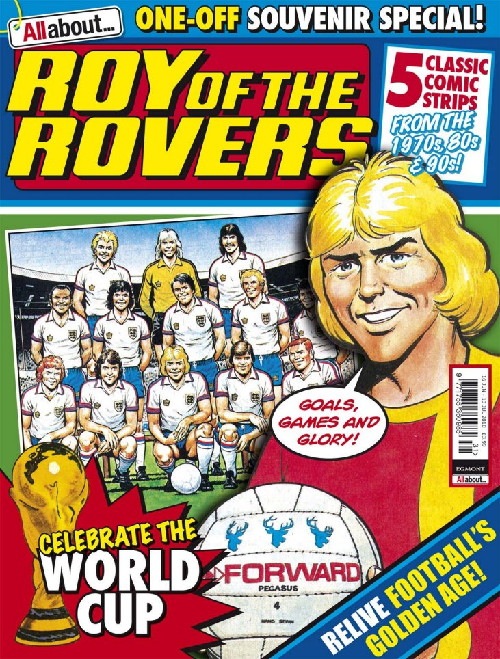
Okay, it’s just a reprint:
It will rekindle fond memories for those who grew up with the greatest footballer who never lived – and will introduce a new generation of fans to a golden age when soccer stars actually set a good example to youngsters. Roy Race never swore, didn’t spit, and always played fair. He would never be seen in a brothel, didn’t steal anyone’s girlfriend, and displayed uncommon loyalty to his beloved Melchester Rovers in the face of a string of lucrative offers. When ‘Racey’ put on the England shirt, a nation stood proud.
Frankly, we don’t care, just so long as he has that awesome ’80s hair.

 When I asked the Youth Advisory Board for thoughts on the World Cup, I suspected the volunteer would be someone outside the United States. Interestingly, however, it was our American teen in Switzerland Caroline Marques who came forward. Below she... Read the rest of this post
When I asked the Youth Advisory Board for thoughts on the World Cup, I suspected the volunteer would be someone outside the United States. Interestingly, however, it was our American teen in Switzerland Caroline Marques who came forward. Below she... Read the rest of this post
Out of Office reply:
Thank you for your message. I will be out of the office now from June 11th - July 11th. I will be checking my e-mails on my return, but if England don’t win the World Cup, I might not come back at all.
Oh it's that time once again. For thirty glorious days England expects, and as football fever sweeps the nation, Penguin Books have decided to show their full support for Fabio's men.
In a controversial move, Penguin Books have renamed a number of their summer titles in time for the World Cup finals.
New titles include:
The Case For Working with your Hands: A radical new goalscoring strategy by Matthew Crawford
Fabio, Naked by Nick Hornby
The Help: We need all we can get by Kathryn Stockett.
Penguin employee Roy Cannavaro, a branding executive, has high hopes for the titles.
"I think they will inspire England to win. The manager Fabio Capello is well known to read Peppa Pig to Wayne Rooney at bedtimes before he tucks him in.”
Penguin, an unofficial sponsor of the 2010 World Cup will not be following in the footsteps of Toshiba, who have promised full refunds to customers of HD televisions if England win the World Cup, and Sports Direct who will give fans their money back who purchased shirts if England lift the trophy.
However, famous for the invention of the paperback by Allen Lane in 1935, Penguin is once again at the cutting edge of book technology. An even slimmer paperback has been designed to fit in the players’ shorts and shirt pockets during games at the finals.
Joe Di Canio, a literary clothes stylist/publicist at Penguin says that the new paperback will add to overall player movement and comfort.
"Ashley Cole could do with bulking up a bit and it will also give him something to do if he gets lonely out on the left side of defence."
However, while Penguin's patriotic marketing technique has been hailed by some as "brave and pioneering”, some literary purists believe that something must be done to put an end to this “soccer madness.”
A. Ferguson, the scottish founder of the 'Penguin for Justice' movement believes that it is bringing the company's name and history into disrepute, and ruining the image of books around the world. “I would rather eat a book than watch it be defaced in such a way.”
With the recent launch of the iPad and the traditional reading drought that occurs during the World Cup month, publishers are increasingly looking for ways to compete in a competitive marketplace. Whether Penguin's bold marketing strategy pays off, and whether it will help England to win the World Cup, only time will tell. But regardless of the outcome, and in those famous words of 1966: "They think it's all over, it is now. So read a book."
Ben Brusey
Editorial Assistant, Viking
By:
Bianca Schulze,
on 6/11/2010
Blog:
The Children's Book Review
(
Login to Add to MyJacketFlap)
JacketFlap tags:
Sports,
Soccer,
Tina Ferraro,
Jack,
Mike Lupica,
World Cup,
Ages Four to Eight: Books for pre-school to second grade,
Ages Nine to Twelve: Books for third through sixth grade,
Teens: Books for young adults,
Book Lists: Specialty picks,
Rich Wallace,
Chris Raschka,
James E. Ransom,
Lesa Cline-Ransome,
Maria Padian,
Mia Hamm,
Patricia J. Murphy,
Add a tag
No matter which team you go for, here is a team of books to whet the appetite of any young soccer enthusiast.
View Next 3 Posts



















 I’ve come to the rescue with a simple idea that kills all three objections. Here is what soccer should do. If a player flops, he has to stay face-down on the ground motionless like a kid playing freeze tag until the guy with the big gloves comes over and tags him. Think about that! Empty nets while the goalies run all over the field bringing players back to life means higher scores. Motionless players make for built-in impediments – therefore, more contact – which leads to additional flopping and more speed bumps. Soccer has just become a high-scoring, contact sport, with frozen men lying face down all over the field! Genius.
I’ve come to the rescue with a simple idea that kills all three objections. Here is what soccer should do. If a player flops, he has to stay face-down on the ground motionless like a kid playing freeze tag until the guy with the big gloves comes over and tags him. Think about that! Empty nets while the goalies run all over the field bringing players back to life means higher scores. Motionless players make for built-in impediments – therefore, more contact – which leads to additional flopping and more speed bumps. Soccer has just become a high-scoring, contact sport, with frozen men lying face down all over the field! Genius.




 Professor Severus Snape has been crowned the winner of the
Professor Severus Snape has been crowned the winner of the 


Oh how fun! I totally would have eaten every bite as well!:-)
I’m ready to explode just reading about it and seeing the photos…bon appetit had by all. What better way to vaycay!
Thanks, Donna! It was definitely a memorable night.
Yes, that was really the only thing to do :)